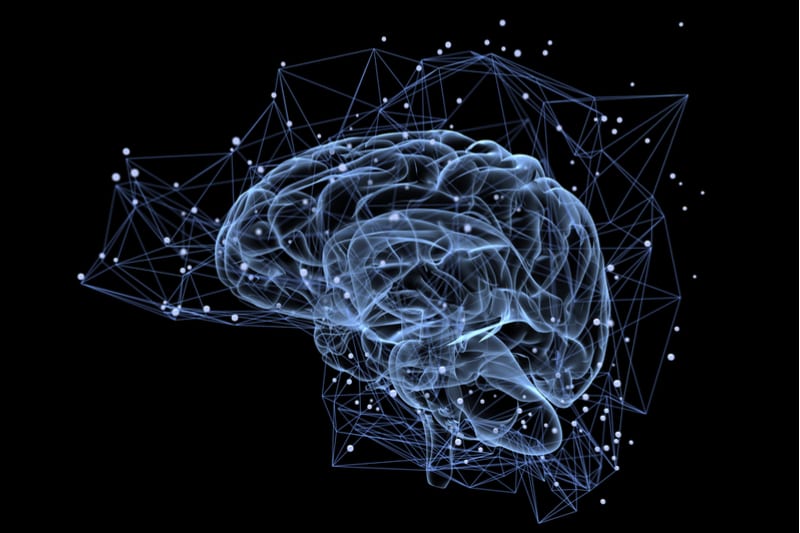It’s not about mental intelligence, it’s about mental fitness.
— Jim Kwik, trainer of Midvalley’s Superbrain Quest
According to memory expert Jim Kwik, having a great memory boils down to MOM — no, not the precious woman who birthed you: motivation, observation, and mechanics.
Having a great memory isn’t about genetics or repetition, it’s simply learning the mechanics of how to improve memory, and having the motivation to apply those mechanics. Our brains are like a muscle — the more you train them, the stronger they will be. In this article, we will share with you some mechanics of improving memory, but it’s up to you to have the motivation to work out.
Before we dive deep into learning how to improve memory, let’s take a quick look at the geography of the mind and get a feel for how memory works.
What Part of the Brain Controls Memory?
Memories are formed and strengthened by the consistent firing of neurons. The more frequently two neurons are fired, the stronger the neural pathway is. The stronger the neural pathway, the stronger the memory. A great analogy to describe this process is a hiking path — the more often it is traveled and frequented by hikers, the easier it is to walk along.
This means that if neurons are no longer being fired together, they will eventually lose their bond and diminish. The brain works in this ‘use it or lose it’ kind of way to our advantage. Our brains are plastic, meaning that they are always changing form and shape to fit our current needs.
Now you may be wondering, “but where does this memory-making process take place?” The answer to that question is a bit more complex than we commonly believe…
In short, everywhere.
All of it is different, interconnected regions work together as the “memory part of the brain.” There is no one place where memories are stored — all of the brain’s interconnected regions work together to consolidate, store, and recall memories. For example, explicit memories (general information and memories based off of real-life events) take place in the amygdala, hippocampus, and neocortex. On the other hand, implicit memories (unconscious or automatic memories) take place in the basal ganglia and the cerebellum.
It’s important to understand how the brain works —as a whole— to create and maintain memory because you can learn to build a better memory by utilizing all of these different parts. You’ll notice in the following sections that you can learn how to improve memory by combining different elements of the mind, such as visual imagination, spatial awareness, and association.
If you want to dive deeper into the neurology of memory formation, check out our post, What Part of the Brain Controls Memory?

How Do You Retain Memory?
Memory techniques, or mnemonics, work wonders by combining different elements of the mind (imagination, association, and location) together to easily create a much stronger memory.
Here are two of the most common mnemonics used by Wizards of memory around the world.
Memory palace
The Memory Palace technique leverages our brain’s fantastic (and highly instinctual) gift for spatial memory. This technique also utilizes the powers of visual imagination and association.
Let’s say you are trying to remember this shortlist of grocery items (although the list can be surprisingly long):
- Toilet paper
- Milk
- Bananas
It works like this: build a memory palace in your head by imagining that you are standing in your home (or somewhere else you are super familiar with). As you stand there, imagine seeing your lamp completely wrapped in toilet paper, giant puddles of milk on your sofa, and a monkey eating bananas on the rug. Sounds a bit messy, we know. These stories can get a bit funky, but generally, the stranger (and funnier) your Memory Palace looks, the stronger of memory you will develop.

Linking
This technique of Linking works best by combining the powers of visualization and association. Our brains love to be able to relate something that we are trying to learn to something we already know. They are also very visual learners and learn great through the art of storytelling.
So, here’s how linking works: create a visual representation for each item you are trying to remember, then link them all together into a (sometimes rather strange) story. This is similar to the Memory Palace, except it’s a bit simpler because you aren’t thinking spatially.
So, let’s create a story based off of our pretend grocery list of toilet paper, milk, and bananas…
Let’s imagine it’s Halloween and a young man is wrapped in toilet paper (pretending to be a mummy). He is really thirsty, so he starts running toward a glass of milk. On his way to the milk, though, he slips on a banana peel and tumbles to the ground. As we want to be kind to the young man in this story, we will end it with a milk angel delivering him the best milk in all the heavens.
Again, similar to the Memory Palace technique, the stranger it is the better.
If you’d like to learn more about memory techniques, exercises, and games, check out our Memory Techniques article.
How Can I Improve My Memory Fast?
So, now that we’ve discussed some memory techniques, let’s explore some other ways how to improve memory.
#1: Become interested in what you are learning
Being interested in what you are learning is like giving your brain permission to hold onto it. We all learn much quicker when we are interested. For example, most people have a much easier time remembering the names of people they find attractive (har har).
So, if you can find a way to be excited about and interested in what you are learning, you will remember it tenfold. This is one of the funniest lessons on how to improve memory — just be more curious!
#2: Teach what you are learning to others (or to yourself)
As you begin to find ways to teach what you are learning, you start thinking of the lesson differently. First, your brain begins to break the information down in new ways in order to communicate it out loud. Second, you think of it as something that you already know. Telling your brain that you are already an expert at something goes a long way psychologically.
These both really help to further solidify the new information. Plus, your friends get to learn something new. It’s a win-win. Perhaps, you can even start setting up teach-trades with your friends.
#3: Take brain breaks
Sometimes, your brain just needs to recuperate and focus on something new. Taking a 15-minute break from whatever you are trying to learn can help to clear your brain and digest what you are learning.
Power naps are a great way to improve memory as the brain then can begin storing the information in your long-term memory. As well, doing physical exercise, watching a funny video (the key here is to laugh and feel good), doing yoga, and meditating are all great things to do during this brain break.
If you are interested in discovering even more effective tips on how to improve memory, check out our article, How to Memorize Efficiently and Greatly Improve Your Short Term Memory.
How to Memorize a Speech
One of the most complex and nerve-wracking things people have to memorize are speeches. For that, we are giving you two quick, yet utterly useful, tips on how to memorize a speech more efficiently.
Don’t write out your speech
That sounds a bit crazy, right? Isn’t that usually the very first thing we do?
Don’t do it. By trying to memorize your speech word-for-word, you dramatically increase your chances of messing it up, freezing, and sounding like a robot. Plus, it’s extremely time-consuming. On top of all of that, nobody knows the difference.
So, here’s what you should do instead: just write the outline.
That’s right, as opposed to writing several paragraphs, just write bullet points of the key topics you wish to cover. Keep it straight-forward — an outline is simply to just keep your thoughts on the right path.
Only writing an outline opens the floodgates of flow, charisma, and a very present, gripping sense of emotion.

Relax
That’s right. Breathe, giggle, dance…
Do whatever you need to do to relax. Nothing stunts our memory and attention more rapidly than the pesky chemical cortisol. Remind yourself of your ability, your brilliance, your confidence, and your expertise.
If you’d like a more in-depth look at how to memorize a speech (as well as how to efficiently memorize other things, such as the periodic table), check this article on How to Memorize a Speech 10X Faster and Other Awesome Memory Hacks.
What Is the Best Supplement to Improve Memory?
On top of all these awesome tips on how to improve memory, you can actually eat your way to better memory.
It’s true.
While there is a cornucopia of foods that know how to improve memory, we will hone in on the strongest and healthiest ones.
- Blueberries (A.K.A. brain-berries)
- Avocados
- Beets
- Bone broth
- Dark chocolate (better yet, pure cocoa)
- Broccoli
- Leafy greens
- Salmon (for omega 3)
- Coconut oil
- Walnuts
- Turmeric
- Red wine
- Coffee
- Green tea
For a much more in-depth article about brain foods, check out The Best and Most Delicious Memory Boosters.








